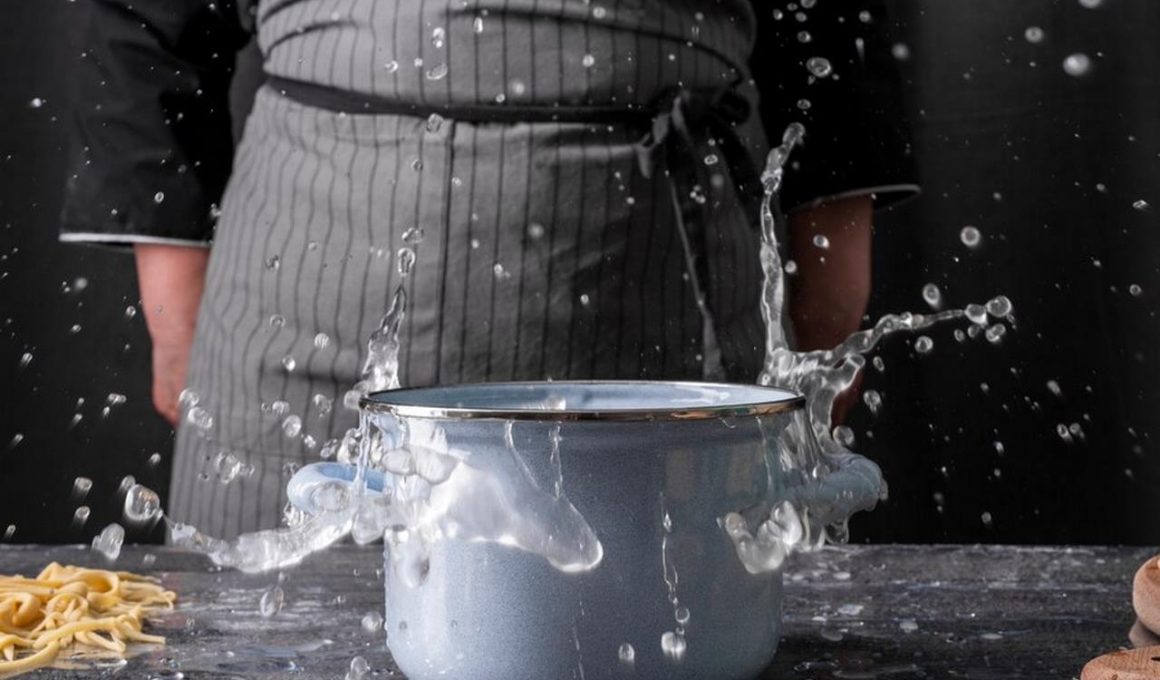When it comes to cooking udon noodles, the main difference between the dry and semi-dry variety is the amount of time you cook them. Udon noodles are generally cooked for eight to twelve minutes in boiling water. They are served hot in the winter and cold in the summer. In the Edo period, udon noodles were served with a hot broth, while today, udon noodles are served with soups and salads.
Fresh udon noodles are a great choice for udon noodles
In most Asian grocery stores, you can find a package of fresh udon. The noodles are uncooked and lightly coated with corn starch or flour to prevent sticking together. The noodles should be cooked before adding them to stir-fries. You can also find dried udon in grocery stores. However, fresh udon are the most delicate and require the most care to prepare properly.
When buying udon noodles, you’ll find they come in different shapes, sizes, and chewiness. You can also find translucent varieties, which are made with potato starch. For convenience, you can find packaged soups, dried udon, and ready-to-cook udon at Asian markets. If you’re in a pinch, you can substitute udon with soba noodles. These noodles are thicker than udon and will hold up well in both hot and cold soups. You can also substitute thick Chinese egg noodles with udon in stir-fries.
If you’re looking for a delicious and easy meal, you can make your own udon noodles at home. It’s easier to cook homemade udon noodles than store-bought ones. The process is simple: combine flour, water, and salt to make a dough. Once the dough is ready, knead it for a few minutes before covering it to rest for at least an hour. This resting time will help the dough become more malleable. After that, you can roll out the dough on a floured surface.
If you’re cooking udon noodles at home, you must know how to prepare them properly. When you’re cooking udon noodles from scratch, you have to take into account the thickness of the udon noodles. Overcooked udon noodles are not good for eating. Overcooked noodles will become soggy, making it difficult to pull apart. To avoid this, make sure you remove them from the water when they are soft. You can also drizzle a little oil onto the udon dough before cooking.
To make udon noodles at home, you can use different kinds of soups. Try ramen and curry udon, which are both Japanese soups. They’re great for a light dinner. They can be filled with protein, so they’re good for you. You can also make udon at home using soy or sesame sauce instead of beef.
When you’re ready to prepare udon noodles, make sure you take the necessary precautions to store them properly. Always use original packaging, and store them in a dark, cool area. Label each container with the type and brand of noodle you’d like to use. In addition to reducing food waste, proper storage will also lead to healthier eating habits and lower food costs.
You can even add shitake mushrooms for an earthy umami flavour. You can also use baby bok choy instead of regular bok choy, as it shrinks when cooked. After cooking, drain the udon noodles, and then stir them into the stir-fry sauce. Make sure you toss the noodles thoroughly to make them extra chewy.
Cooking time
While Italian pasta usually takes only a few minutes to cook, fresh udon can be cooked in as little as seven minutes. Depending on thickness, they should be soft, but not mushy. When cooking, you should rinse udon under cold water before draining and cooking them further. If you’re unsure of the cooking time for udon noodles, follow the tips below. Cooking time for udon noodles can vary by several minutes, so it is best to experiment with different methods.
If you want to cook udon in a hurry, you can buy shelf-stable udon in vacuum-packed packages. These can be cooked right away and added to stir-fries and soups without the need to soak them first. When using semi-dried udon, however, you should cook them for 8 minutes in boiling water. Once cooked, they will be soft and pliable.
If you’re unsure of the cooking time for udon noodles, start by making the dough. Roll the dough to about 1/4 inch thick. You can also try making them a little thinner by using a rolling pin. This way, they don’t stick together when they’re boiled. When cooking udon noodles, you should use 1 litre of water. The hot water will make them absorb water, so the thinner the noodles are, the more they’ll expand.
Another way to make udon noodles is to make your own. The quality of homemade noodles is far superior to store-bought udon noodles. Use fresh ingredients whenever possible. Make sure to use the highest-quality flour when making your own noodles. These will ensure that they’re not chalky or too floury. This method will give you chewy, elastic, toothsome udon noodles that are easy to prepare.
If you’re unfamiliar with udon noodle preparation, start by checking the ingredients for the best results. For example, a fresh packet of udon noodles will need about two minutes to reach the boiling point. But if you’re making your own udon noodles, you can use all-purpose flour. It’s better to use wheat flour instead of rice because it contains more protein. When you cook udon noodles at home, the amount of salt used should be no more than one third of the total amount.
Unlike rice or spaghetti, udon is made of wheat flour, making it the perfect food to prepare in your own kitchen. Whether you’re cooking fresh udon noodles or buying dried ones, the cooking time will vary. Moreover, you’ll need to keep in mind the temperature of your udon noodles. While cooking udon noodles, make sure not to overcook them as the water is very hot and the udon will fall apart.
Ingredients
Making udon noodles at home does not require any special equipment. You can use a stand mixer to make the dough. The next step is to make the udon noodles by hand. The ingredients for udon noodles are the same as those used for making other kinds of noodles. When you make your own udon noodles, you need to prepare a large pot of boiling water. You should cook the udon noodles according to the package directions. If you want to make homemade udon noodles, you can follow the same process but use more starch. The udon noodles should be cooked for 10 minutes before serving.
You can purchase pre-cooked udon noodles in Asian grocery stores. They come vacuum packed in plastic. To cook the noodles yourself, simply boil the water according to the package directions, then drain and rinse the noodles in cold water. You can also purchase dried udon noodles. Just be sure to drizzle them with oil before eating. The starch that gives the udon noodles their chewy texture comes from the starch inside.
The dough should be about 1/4 inch thick. If you do not roll it out to the desired thickness, it is too thick. Then, dust the dough with starch and roll it out using a rolling pin. You should roll out the dough in two directions from the center. This will help the dough retain its shape. Alternatively, you can use a plastic bag. To prevent the bag from ripping, use a towel over it.
The ingredients of udon noodles can be found on the packaging itself. Some varieties are pre-cooked and can be served with soups and stir-fries. If you do not want to make your own udon noodles, you can buy frozen ones. These can be cooked immediately or frozen for later use. Then, you can make your favorite udon recipe with them. The recipe below will help you prepare your udon noodles.
You can use a mixture of table salt, Himalayan salt, and cornstarch. You can also substitute cornstarch with rice flour or tapioca flour. You can also use a mixture of tapioca flour and rice flour to make your udon noodles. Once you have all the ingredients, it is time to cook. Once you have the udon noodles ready, you can enjoy them anytime!
To cook udon noodles, add them to boiling water and stir them to prevent them from sticking. The noodles should be cooked until they are opaque in the middle. For 1/8-inch-diameter udon noodles, this process should take about twelve to thirteen minutes. For larger-diameter udon noodles, it will take about fifteen to twenty minutes. Once cooked, drain and rinse with cold water.
Podobne tematy




